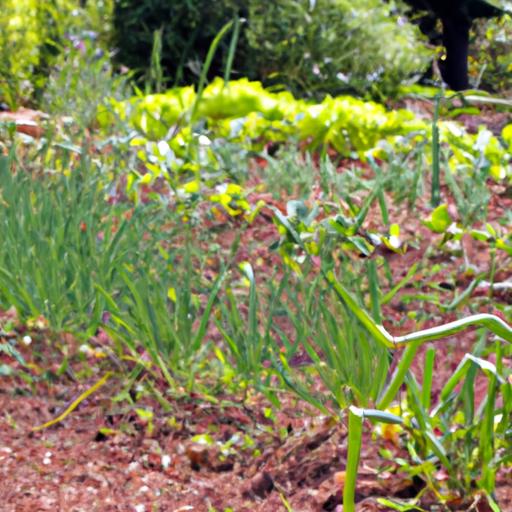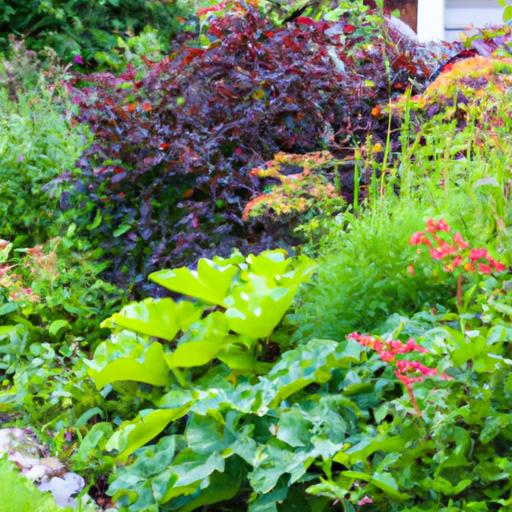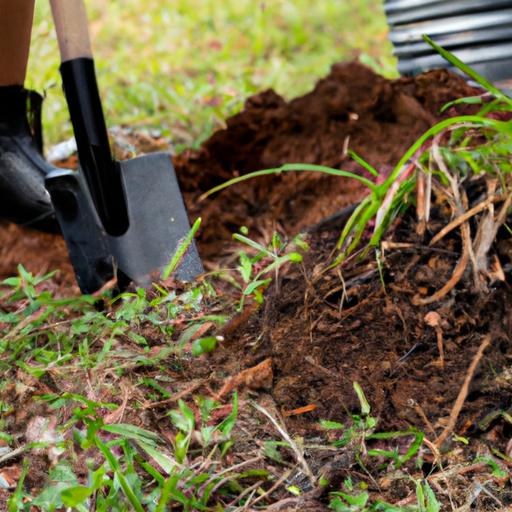Introduction
Have you ever wondered what gardening zone Houston falls into? Knowing your gardening zone is like having a secret weapon in your green thumb arsenal. It’s the key to unlocking the full potential of your garden and ensuring your plants thrive in their optimal environment. Houston, with its unique climate and diverse flora, requires a tailored approach to gardening. In this article, we will explore the importance of understanding gardening zones and delve into Houston’s climate and gardening potential.
When it comes to gardening, knowledge is power. Understanding your gardening zone enables you to make informed decisions about what plants will flourish in your area. Houston, nestled in the heart of Texas, boasts a subtropical climate that offers both advantages and challenges for gardeners. From scorching summers to mild, short winters, Houston’s weather can be a rollercoaster ride for plants. However, armed with the knowledge of your gardening zone, you can overcome these obstacles and create a thriving garden oasis in the Bayou City.
Houston’s climate is characterized by high humidity, ample rainfall, and long growing seasons. These conditions provide an incredible opportunity for gardeners to experiment with a wide variety of plants and enjoy year-round beauty. However, it’s crucial to understand the specific gardening zone in Houston to make the most of this potential.
In the following sections, we will delve deeper into gardening zones, their significance, and how they relate to Houston’s unique climate. We’ll discuss the benefits of knowing Houston’s gardening zone and provide practical tips on how to determine it. So, grab your gardening gloves and join me as we embark on a journey to uncover the secret behind Houston’s gardening zone. Together, we’ll unlock the full potential of your garden and watch it bloom like never before.
Understanding Gardening Zones
Gardening zones, also known as hardiness zones, are geographical areas that categorize regions based on their average climatic conditions. These zones help gardeners determine which plants are most likely to thrive in a specific area. Understanding gardening zones is essential to ensure that your plants are well-suited to the prevailing climate and environmental factors.
Definition and Purpose of Gardening Zones
Gardening zones are defined by the United States Department of Agriculture (USDA) based on the average minimum winter temperatures in a given region. The USDA Plant Hardiness Zone Map divides North America into 13 zones, each representing a 10°F difference in average annual minimum temperature. This map serves as a valuable tool for gardeners, providing a standardized reference to determine the suitability of plants for different areas.
The purpose of gardening zones is to guide gardeners in selecting plants that are adapted to their specific climate conditions. By understanding the zone you reside in, you can make informed decisions about the types of plants that are most likely to thrive in your garden. This knowledge helps you avoid wasting time, money, and effort on plants that are ill-suited to your zone’s conditions.
Factors Determining Gardening Zones
Several factors come into play when determining gardening zones. The primary factor is the average minimum winter temperature, as it greatly influences a plant’s ability to survive and thrive. However, other climatic elements such as humidity, rainfall, and wind patterns also impact a region’s gardening zone. These factors collectively determine the unique microclimate of each zone, making it crucial to understand the specific conditions in your area.
Significance of Gardening Zones for Successful Gardening
Knowing your gardening zone is the first step towards successful gardening. Different plants have different temperature requirements and tolerances. By selecting plants that are well-suited to your zone, you can ensure they can withstand the local climate’s extremes, resist diseases and pests, and flourish in your garden.
Gardening zones also help determine the appropriate timing for planting and harvesting. By understanding your zone’s frost dates and growing seasons, you can plan your gardening activities accordingly. This knowledge allows you to optimize the growth and productivity of your plants, resulting in bountiful harvests and a more fulfilling gardening experience.
Now that we have a grasp on the basics of gardening zones, it’s time to explore Houston’s unique climate and the gardening zone it falls under. Let’s dive into the next section to unravel the secrets of gardening in the Bayou City.
Houston’s Climate and Gardening Zone
Overview of Houston’s Climate
Houston, often referred to as the “Bayou City,” experiences a unique subtropical climate that sets it apart from other regions in Texas. Summers in Houston are hot and humid, with temperatures frequently soaring above 90°F (32°C). The city also receives a generous amount of rainfall, especially during the summer months, which can create a lush and vibrant landscape.
Winters in Houston are generally mild, with temperatures rarely dropping below freezing. However, occasional cold fronts can bring chilly temperatures for short periods. The average winter temperature hovers around 50°F (10°C), making Houston a relatively frost-free zone.
Factors Influencing Houston’s Gardening Zone
Several factors influence the gardening zone in Houston, including its proximity to the Gulf of Mexico, elevation, and the urban heat island effect. Being located near the Gulf of Mexico exposes Houston to warm oceanic currents, resulting in higher humidity levels and increased rainfall. This combination creates a favorable environment for a wide range of plants to thrive.
Elevation also plays a role in determining Houston’s gardening zone. Parts of the city have slightly higher elevations, which can lead to cooler temperatures and different microclimates within the area. These variations influence the types of plants that can flourish in different parts of Houston.
The urban heat island effect, caused by extensive urbanization and concrete structures, can also impact Houston’s gardening zone. Heat absorption and reradiation from buildings and roads can create localized warm pockets, affecting temperature fluctuations within the city and potentially altering the gardening zone in certain areas.
Description of the Gardening Zone in Houston
Houston falls primarily within USDA Hardiness Zone 9a, with some areas bordering Zone 8b. This classification indicates the average annual minimum temperature range of 20°F (-6.7°C) to 25°F (-3.9°C) for Zone 9a and 15°F (-9.4°C) to 20°F (-6.7°C) for Zone 8b.
In practical terms, this means that Houston gardeners can enjoy a long growing season, typically lasting from late February to early December. With the mild winters, it’s possible to cultivate a wide array of plants, including tropical and subtropical varieties. However, it’s essential to select plant species that can tolerate the occasional cold snaps and unpredictable weather patterns that Houston experiences.
Understanding Houston’s gardening zone empowers you to choose plants that are well-suited to the local climate, ensuring their survival and success in your garden. So, let’s dive deeper into the benefits of knowing Houston’s gardening zone and discover how it can transform your gardening experience.
Benefits of Knowing Houston’s Gardening Zone
When you have a clear understanding of Houston’s gardening zone, it opens up a world of benefits that can help you achieve gardening success beyond your wildest dreams. Let’s explore some of the key advantages of knowing Houston’s gardening zone:
A. Appropriate Plant Selection
Houston’s gardening zone provides valuable insights into the types of plants that will thrive in your garden. Certain plants are better suited to specific zones due to their tolerance for temperature ranges, moisture levels, and other environmental factors. By knowing your gardening zone, you can select plants that are well-adapted to Houston’s climate, ensuring they have the best chance of flourishing.
Are you dreaming of vibrant, colorful flowers that will brighten up your garden throughout the year? Perhaps you’re eager to grow delicious, homegrown vegetables that will grace your dinner table. Knowing Houston’s gardening zone helps you choose the perfect plants for your desired outcomes, saving you time, effort, and disappointment down the line.
B. Proper Timing for Planting and Harvesting
Timing is everything in gardening, and understanding Houston’s gardening zone allows you to plan your planting and harvesting schedules with precision. Different plants have unique growth requirements and lifecycles. By aligning your gardening activities with the specific needs of your zone, you’ll ensure that your plants receive the ideal conditions for germination, growth, and fruiting.
Knowing when to sow seeds, transplant seedlings, or harvest your crops can make a significant difference in their overall health and productivity. With Houston’s gardening zone knowledge at your fingertips, you can optimize your gardening calendar to take advantage of the city’s favorable climate and maximize your yield.
C. Maximizing Gardening Success and Yield
Ultimately, the main goal of any gardener is to achieve abundant, thriving plants. By knowing Houston’s gardening zone, you can create an environment that caters to your plants’ specific needs, increasing their chances of flourishing.
Understanding your gardening zone helps you make informed decisions about soil amendments, irrigation methods, and pest control strategies. By tailoring your gardening practices to your zone, you can optimize growing conditions, prevent potential issues, and create a harmonious ecosystem in your garden.
With Houston’s gardening zone as your guiding compass, you’ll be equipped to navigate the unique challenges and opportunities that the city’s climate presents. Your garden will become a haven of beauty, productivity, and joy—a testament to your gardening prowess.
Now that we’ve explored the benefits of knowing Houston’s gardening zone, let’s move on to the next section on how to determine it. Stay tuned for practical tips and resources that will help you unlock the secret code to Houston’s gardening success.
How to Determine Houston’s Gardening Zone
Are you ready to unlock the mystery of Houston’s gardening zone? Determining your gardening zone is easier than you might think, thanks to the wealth of resources available. Let’s explore some effective methods to find out which zone Houston falls into.
A. Online resources and tools
The internet is a treasure trove of information, and it’s no different when it comes to determining your gardening zone. Numerous online resources and tools can provide you with quick and accurate results. Websites like the National Gardening Association and the USDA Plant Hardiness Zone Map offer interactive maps that allow you to enter your location and instantly discover your gardening zone. These tools take the guesswork out of the equation and provide you with valuable insights to plan your garden effectively.
B. Consulting local agricultural extension offices
Sometimes, nothing beats good old-fashioned human expertise. Local agricultural extension offices are an excellent resource for gardeners seeking personalized advice. These offices are staffed by knowledgeable professionals who have a deep understanding of the local climate and gardening conditions. They can guide you in determining Houston’s gardening zone based on specific factors unique to your area. By consulting these experts, you can gain valuable insights tailored to your garden’s needs and ensure the best possible results.
C. Using USDA Plant Hardiness Zone Map
The USDA Plant Hardiness Zone Map is a tried-and-true tool that has been used by gardeners for decades. This comprehensive map divides the United States into different zones based on average minimum winter temperatures. By locating Houston on the map, you can determine its corresponding gardening zone. The USDA map is widely recognized and trusted, making it an invaluable resource for gardeners across the country.
Determining Houston’s gardening zone empowers you to make informed decisions about plant selection, timing, and care. It ensures that your garden is filled with plants that can thrive in your specific climate conditions, maximizing your chances of success. Whether you choose to utilize online resources, consult local agricultural extension offices, or rely on the USDA Plant Hardiness Zone Map, the key is to arm yourself with the knowledge necessary to create a vibrant and flourishing garden.
In the next section, we will wrap up our journey and conclude our exploration of Houston’s gardening zone. Together, we’ll summarize the importance of this knowledge and encourage you to embark on your gardening adventure armed with the insights gained. Let’s dive in!
Conclusion
In conclusion, understanding Houston’s gardening zone is the secret ingredient to a successful garden in the Bayou City. By knowing your gardening zone, you can select the right plants, time your planting and harvesting, and maximize your gardening success and yields.
Houston’s climate offers a unique opportunity for gardeners with its subtropical characteristics, high humidity, abundant rainfall, and long growing seasons. However, the city’s diverse microclimates and specific gardening zones play a vital role in determining which plants will thrive in your garden.
To determine Houston’s gardening zone, utilize online resources and tools, consult local agricultural extension offices, or refer to the USDA Plant Hardiness Zone Map. Armed with this information, you can confidently choose plants that are well-suited to your specific zone and create a garden that flourishes year-round.
So, whether you’re a seasoned gardener or just beginning your green thumb journey, don’t overlook the importance of knowing your gardening zone in Houston. Embrace the opportunity to explore the vast array of plants that can thrive in this subtropical paradise and create a garden that reflects your unique style and personality.
Remember, gardening is not just about plants; it’s a journey of growth, patience, and connection with nature. By understanding Houston’s gardening zone, you’re setting yourself up for gardening success and paving the way for a vibrant and flourishing garden that will bring joy and beauty to your life.
Now, go forth and discover the wonders of Houston’s gardening zone. Unleash your creativity, nurture your plants, and watch your garden thrive in the heart of the Bayou City. Happy gardening!




